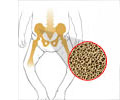New ways to reduce iron deficiency may soon be on the anvil thanks to a study on a bloodless worm called C.
Researchers at University of Maryland are studying a bloodless worm called C.elegans to understand the mechanism of iron deficiency in a better manner. They also hope to find out how iron carried in human blood and then absorbed as well as transported..
C. elegans is a common microscopic worm that lives in dirt, and the research team headed by Iqbal Hamza, has identified new proteins that are critical in the transportation of haeme, the molecule that creates haemoglobin in blood and carries iron."The structure of hemoglobin has been crystallized over and over, but no one knows how the heme gets into the globin, or how humans absorb iron, which is mostly in the form of heme. To understand the underlying issues of nutritional and genetic causes of iron deficiency, we are looking at the molecules and mechanisms involved in heme absorption. Once you understand transport of heme, you can more effectively deliver it to better absorb iron in the human intestine," Nature quoted Hamza, as saying.
Haeme makes blood red and binds to oxygen and other gases needed for survival.
"We wanted to find out how heme gets carried between and within cells," said Hamza.
When Hamza first studied the question in bacteria and mice, he learned that there were 8 steps that were needed to generate haeme, making it a difficult process to control in the study of haeme transport pathways. Thus, he opted for C. elegans roundworm, a simple nematode as his test subject as it doesn't make haeme, but needs it to survive; it doesn't even have blood, but shares a number of genes with humans. C. elegans gets haeme by eating bacteria in the soil where it lives.
"We tried to understand how blood is formed in an animal that doesn't have blood, that doesn't turn red, but has globin. C. elegans consumes heme and transports it into the intestine. So now you have a master valve to control how much heme the animal sees and digests via its food," Hamza said.
Advertisement
Several findings came out of the study that could lead to new treatment for iron deficiency, including one which was the discovery that genes are involved in haeme transport. It was found that HRG-1 genes, which are common to humans and C. elegans, were important regulators of haeme transport in the worm. They also found that too little or too much haeme can kill C. elegans, a result that could help researchers find ways to treat people who suffer from iron deficiency caused by parasitic worms.
Advertisement
The findings of this study are published in the latest issue of Nature online.
Source-ANI
RAS/L








